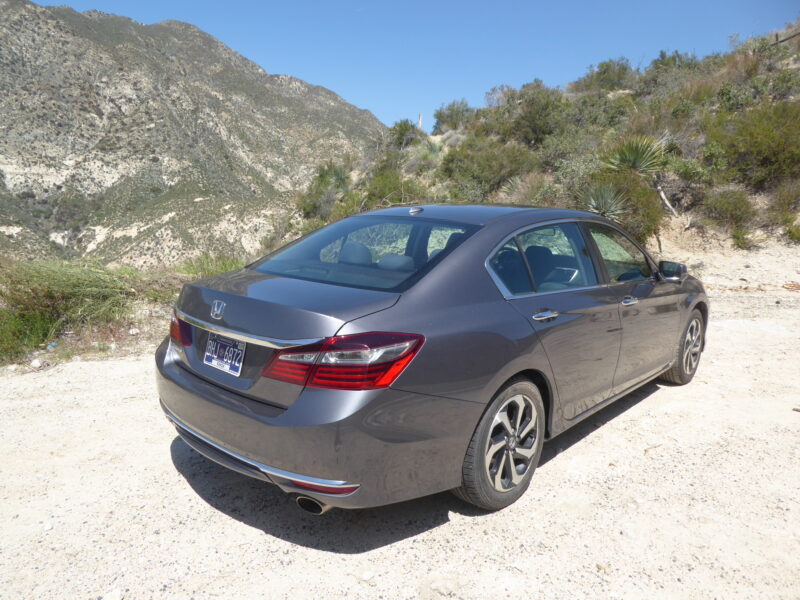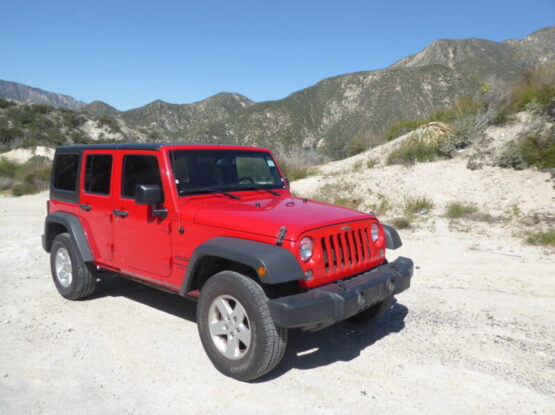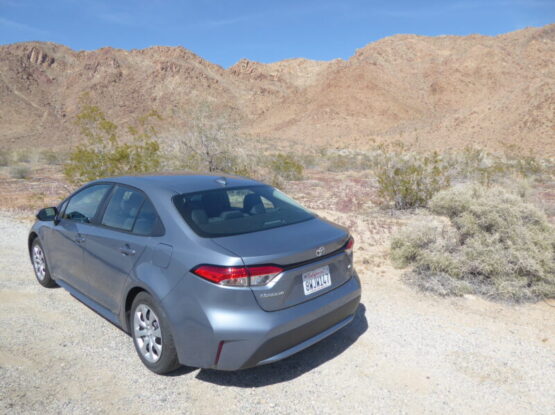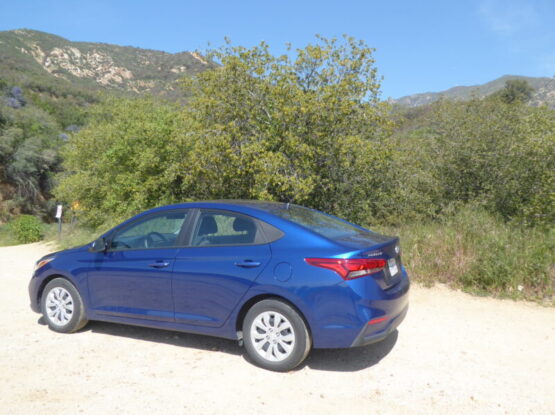As demand for rental cars started to increase again in 2021 and 2022, the rental car companies had not only not got their usual orders for new cars into the system well in advance, and chip supply issues persisted meaning new cars were hard to get, so the only way to add cars to the fleets was to go to the pre-owned market, meaning that all sorts of cars that you did not usually see on fleet were suddenly now parked up among all the rental fleet staples. Two years on, some of them are still on fleet, and in recent times, I have indeed been able to test a number of cars either that I missed out on when they were truly new or which would never have been available as a rental car in the first place. Among the cars that Hertz sourced were a large number of Honda models, and since my return to the US in late 2021, I’ve been able to drive several models from the range, including the Accord, Honda’s long-running mid-sized saloon. A car that has always played second fiddle in the sales charts to Toyota’s Camry, every review you read suggests that not only is this actually a better car in many respects than the Toyota, it is probably the class leader. Certainly the 2019 model year car that I drove, in posh Touring spec with the potent 2.0 litre turbo engine impressed me greatly. I did notice that Hertz also had rather more Accord models from lower down the range which would be more direct competitors for the rental regulars such as the Camry, Altima, Sonata, Optima and any residual Ford Fusion and VW Passat and I do intent to try to source one of these when I can. But before I get there, it seems that the rental car fates decided to offer a different Accord opportunity as I came across an example of the previous generation Accord parked up at LAX. This is a car that eluded me when new, as on the very rare occasions I saw one parked up, it was always allocated to someone else – evidence no doubt that these cars were well rated and therefore if someone had requested one, it would get snapped up. I managed to secure this one, and so was keen not just to fill a gap in my list of cars I had tried, but also to see what you lose out by going with a previous generation car.
This is the ninth generation Accord, and it won’t be familiar to Europeans, as back at the time of the fifth generation car in 1993, Honda developed separate cars for Europe and other markets, and then from the sixth generation car even a separate model for Japan and North America. The last Accords in Europe were sold some time ago, so some may have thought that the name, which was first used in 1976, had been consigned to history. But no, the Accord has been a key car for Honda in America, until recently being by some margin the brand’s best seller. It is also the first car that not just Honda, but any Japanese manufacturer built in the US, back in 1982 and all cars sold in the American market since then have come from the Marysville, Ohio plant. Over the years there have been various body styles, with three door hatchback and estate models, but the core of the range settled down as a four door sedan and a two door coupe and those are the two body styles offered in the ninth generation. A concept version of the coupe appeared at the 2012 Detroit Show and production versions of this and the sedan were revealed in August 2012, with the car going on sale later that year as a 2013 model year car. A mid-cycle update came for the 2016 model year. Changes to the external appearance included a new front grille, head lights, rear lights, and new alloy wheel designs on all of the trims. The 2016 Accord was the first mass-market car to be equipped with Apple CarPlay and the second car to also be compatible with Android Auto. The car was well received and sales were very strong, with well over 300,000 units a year being sold in the US, peaking at over 388,000 in 2014. It is only recently that they have reduced as crossovers take ever larger market share. The tenth generation model was premiered in late 2017, going on sale as a 2018 model year so my test car, a 2017 car was one of the last of this generation.
Honda did sell this version of the Accord with a 3.5 litre V6 engine, but the majority of cars that were delivered came with the 2.4 litre four cylinder unit, as you might expect. In Sport trim, it generates 189 bhp, an 8 bhp increase on the entry level cars and which is slightly less than the class average these days, but only by a few bhp, and honestly, in comparison to all the main rivals, all of which I have sampled over the years, you are not going to feel short-changed. There is keyless starting, so having you pressed the button, the engine comes to life, but even at idle it is smooth and refined and quiet, and that continues almost no matter how you drive the Accord. Acceleration is decently brisk, and there is a pervading impression of refinement at all times. Noise levels are low, with all sources well suppressed and the car just does what you want it to do. This generation of Accord was offered with a standard six speed manual gearbox, a continuously variable available transmission being an option, which was fitted to the test car. Unlike most of its type, this one works really well, seemingly well connected to the engine and the movement of the accelerator pedal. There is an Econ button if you want to sacrifice a little in the way of acceleration, but I left the car in Normal mode during my test. I covered a total of 131 miles and needed to buy 4.1 gallons to fill the Honda up at the end of the day. That works out at 31.95 mpg US or 38.17 mpg Imperial, a decent result but not as good as I have seen with some rivals. However, there is no easy way of telling how full the car really was on collection, so it is quite possible that it actually did quite a better than that.
The Accord is definitely one of the nicer cars in its class to drive. The steering, while never heavy, is well weighted and has plenty of feel, so you really can tell where the steered wheels are headed. The handling was good, with a welcome precision and a sense that the car was capable of far more than I wanted on the swoopy bends in the canyon roads up above Los Angeles. Grip levels are good and there is not much in the way of body roll. Truly this is a car that you can enjoy on twisty roads unlike so many rental cars these days. Proof that Honda have got the chassis right comes from the fact that as well as feeling nice and taut on the bends it also rides well. The test car came on 215/55 R17 wheels. There were no concerns with the brakes which did their job exactly as you would expect. Visibility is better than you get in a lot of cars these days with a good glass area and no really thick pillars to make things difficult. There is a standard rear-view camera which helps when reversing.
The Accord is neatly finished inside, with plenty of good quality materials in evidence. It does feature some fake wood as inlays, but this is dark enough not to be as tawdry looking as us usually the case. Sport trim means you still get a plastic moulded steering wheel but it was pleasant enough to hold. The instrument binnacle contains three large circular dials. A central speedometer unit dominates, with a slightly smaller rev counter to the left and a dial which combines fuel level and water temperature to the right. There is some trip computer info in the centre of the speedometer but there is far more presented in a separate digital area in the top centre of the dash. Set below this is the integrated infotainment screen. This is perhaps where this version of the Accord shows its age as by modern standards it does look a little old-fashioned. In one respect it is not, in that all the buttons were taken away, so you have to use the touch interface, which can be fiddly and difficult to do on the move, as I found out when trying to use the slider for audio volume. Luckily there are some repeater functions on the steering wheel hub, where you also find cruise control buttons. Another sign of the age of the design is the fact that you get a CD slot. There is no XM Satellite radio or navigation with this trim, but you do get Apple Car Play and Android Auto as well as Bluetooth. Below the touch screen are controls for the dual zone climate control. Overall, though, the dashboard layout and controls are generally simple and easy to use in a way that increasingly is not the case.
Seat upholstery is pleasant type of cloth which some will find preferable to the leather that comes in higher spec Accord models. With Sport trim, only the driver’s seat has electric 8-way adjustment, with the front passenger having to use the bar under the seat and levers on the seat side, but at least they do get a height adjuster. Both front seat belts are height adjustable. Even with the standard sunroof, there is plenty of headroom, and the cabin feels nice and light. I found the seat to be very comfortable. The steering column has a wide range of adjustment.
The rear is very roomy, with ample space in all directions and access is easy as the door openings are wide. Even with the front seat set well back, legroom should be adequate even for the tallest occupants here, and there is also a good amount of headroom. The centre console unit does come well back, but there is a negligible central tunnel so there should be enough space for a middle seat occupant. There is a drop-down central armrest with cup holders in the upper surface, and there are map pockets on the back of the front seats as well as pockets on the doors.
There is a nice roomy boot, regular in shape, which should be able to handle the demands of a family. If greater length is required, the asymmetrically split rear seat backrests do drop down. There is a space saver under the boot floor, but it is quite tightly tucked in, so there is no space to tuck in any other smaller items. Inside the passenger cabin, the glovebox is a good size, there are some useful door pockets, a deep cubby under the central armrest and a recess in front of the gearlever as well as a lidded compartment.
The front-wheel-drive 2017 Honda Accord was offered in two body styles. Sedans came in LX, Sport, Sport Special Edition (Sport SE), EX, EX-L, EX-L V6 and Touring trims. Coupes were available in LX-S, EX, EX-L, EX-L V6 and Touring trims. Upgrading from one trim to the next got you more features, and the associated price bumps seemed appropriate given the upgrades you got. A suite of advanced safety systems called Honda Sensing was available on all trims except Touring (where it was standard), but the general view seems to be that this system, not fitted to the test car, was difficult to recommend. Starting with the sedans, the base LX came quite generously equipped and powered by a 2.4-litre four-cylinder engine (185 bhp, 181 lb/ft) paired to a six-speed manual transmission or continuously variable automatic transmission (CVT). Feature highlights include 16-inch alloy wheels, dual-zone automatic climate control, a 7.7-inch central display (not to be confused with the touchscreen that’s added on higher trims), Bluetooth, a rearview camera, a height-adjustable driver seat, a one-piece folding rear seat and a four-speaker sound system. Opting for the Sport, which was the trim level of the test car, got you a bit more power (189 bhp, 182 lb/ft), 19-inch wheels, LED daytime running lights and foglights, cloth seating with imitation-leather bolsters, a power driver seat, a 60/40-split folding rear seat and a leather-wrapped steering wheel (with shift paddles if the automatic transmission is specified). The Sport Special Edition is very similar to the regular Sport, but it adds special-edition badging, heated front seats and leather seats with red accent stitching. The Accord EX also builds off the LX, but it focuses more on extra amenities than sportiness, adding 17-inch wheels, LED daytime running lights and foglights, heated mirrors, a sunroof, keyless ignition and entry, remote ignition (with the automatic transmission), the power driver seat, Honda’s LaneWatch blind-spot camera system, a six-speaker sound system with a 7-inch touchscreen interface (the standard 7.7-inch display remains as well) and satellite and HD radio. Also standard is smartphone app integration via HondaLink (with smartphone-enabled Aha radio features), Android Auto and Apple CarPlay. The EX-L trim comes with the CVT and adds leather upholstery, driver-seat memory functions, a power passenger seat, heated front seats, an auto-dimming rearview mirror and an upgraded seven-speaker sound system. As its name suggests, the EX-L V6 is powered by a 3.5-litre V6 (278 bhp, 252 lb/ft) matched to a six-speed automatic. All these trims can be outfitted with the Honda Sensing package, which includes adaptive cruise control, forward collision warning with automatic emergency braking, and lane departure warning and mitigation. A navigation system is optional for the EX-L and EX-L V6. The range-topping Touring takes the EX-L V6 offerings and adds the features from the Honda Sensing package as well as 19-inch wheels, LED headlights (with automatic high-beam control), automatic wipers, front and rear parking sensors, a rear decklid spoiler, heated outboard rear seats and the navigation system.
This Accord struck me as the perfect family car. Even in the Sport trim, it has everything you need and nothing you don’t, avoiding some of the gimmicks and fripperies that designers cannot resist adding to more recent designs. As tested, the Accord went well, was smooth and refined, decently economical, good to drive, nicely finished, spacious enough inside for a family and their luggage and with a good standard of equipment. What more could you want? And, perhaps to the point, would you want the follow on Accord? I’ve already driven one of those, and it also impressed me, having all the same attributes of this one, but wrapped in a more rakish looking car with more in the way of ADAS safety features, not many of which people really want, despite what the legislators think. Having now tested the ninth and tenth generation Accord models, it is not hard to see both why they sell so well and why the press rate them highly. Although not exciting, they tick every box at least as well and in most cases better than any of their market rivals. Let’s hope that the Accord continues to feature in the rental fleets as this would definitely be the car of choice for those with a booking for a mid-size saloon.













































































































































